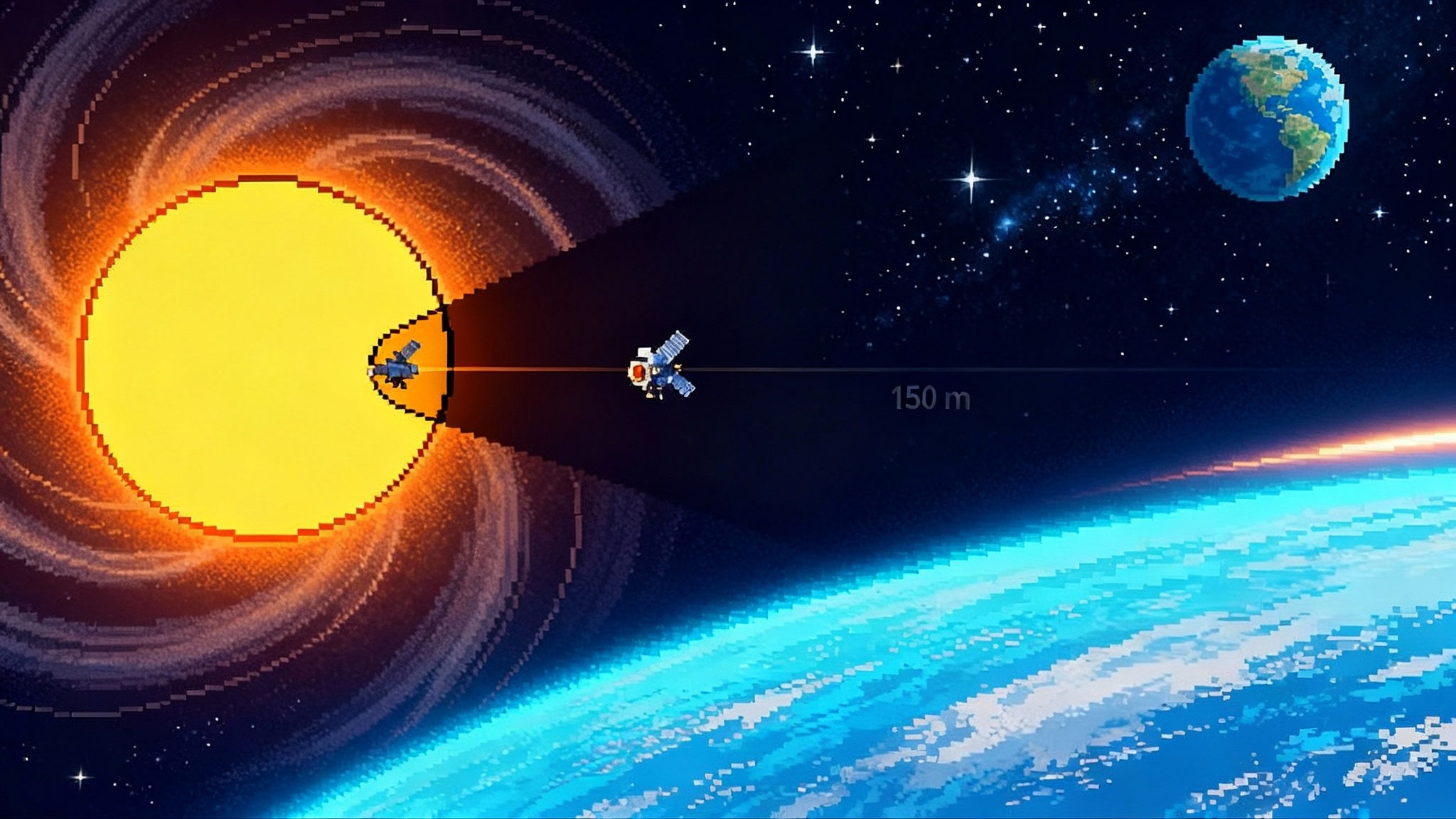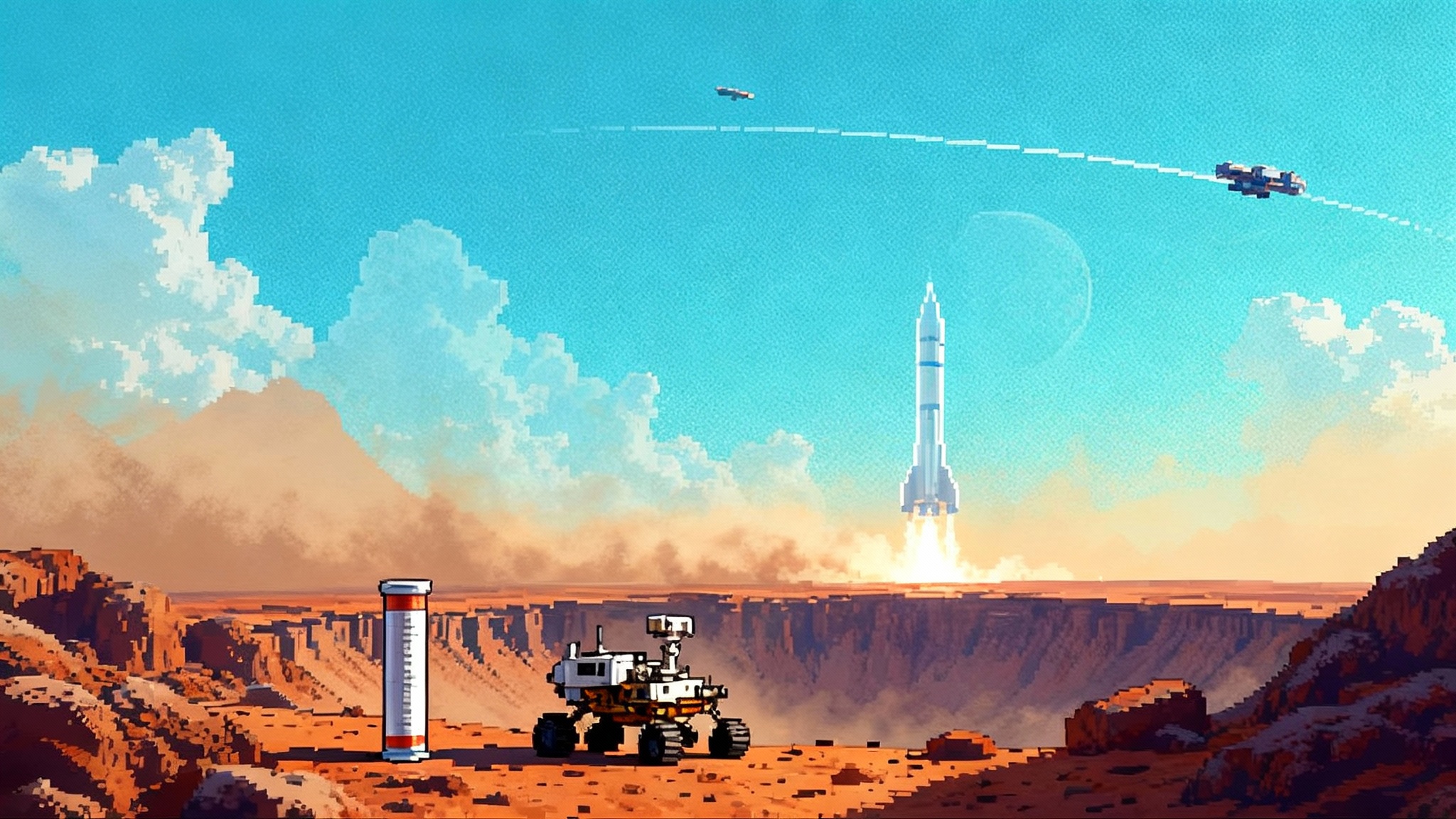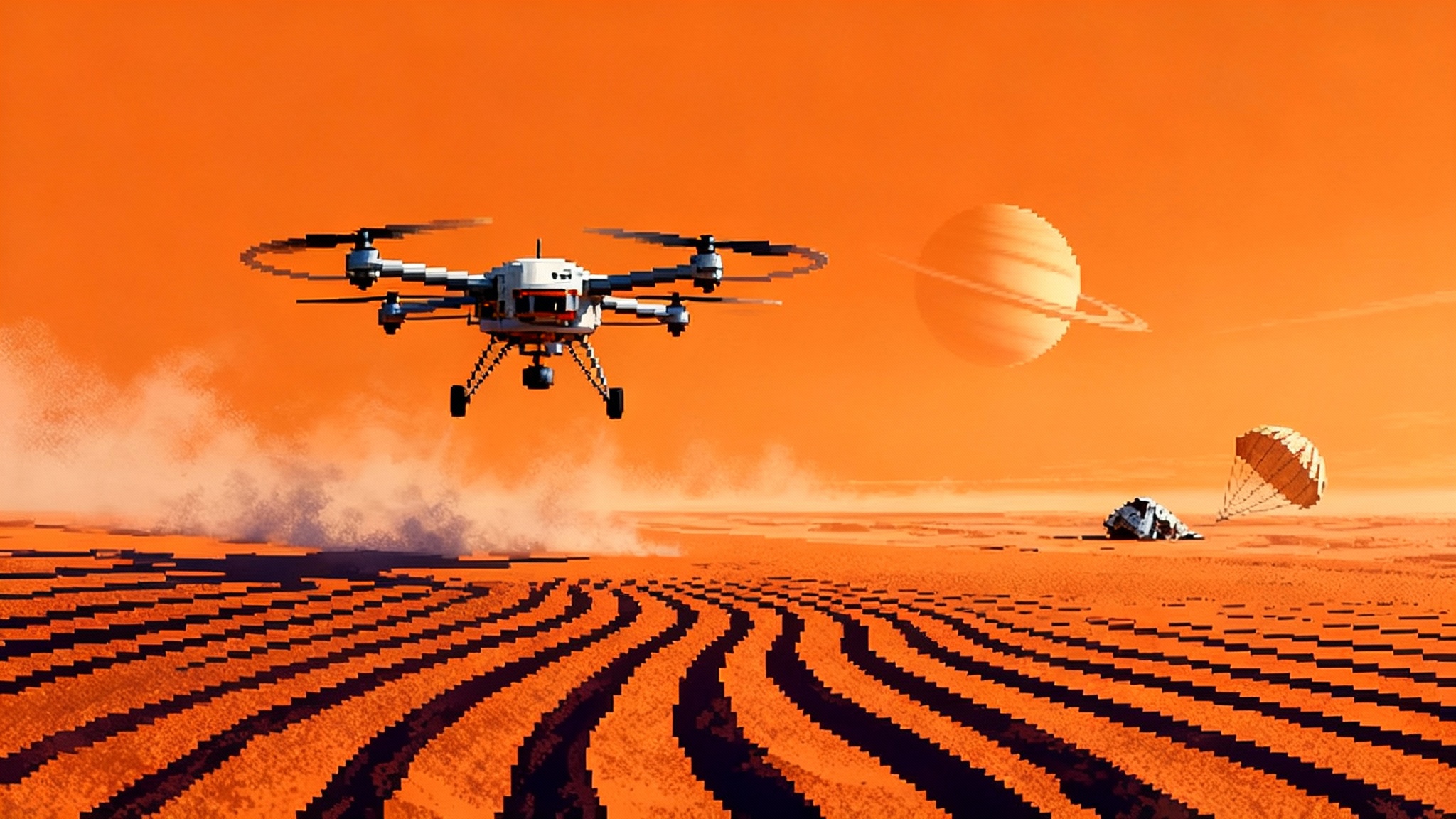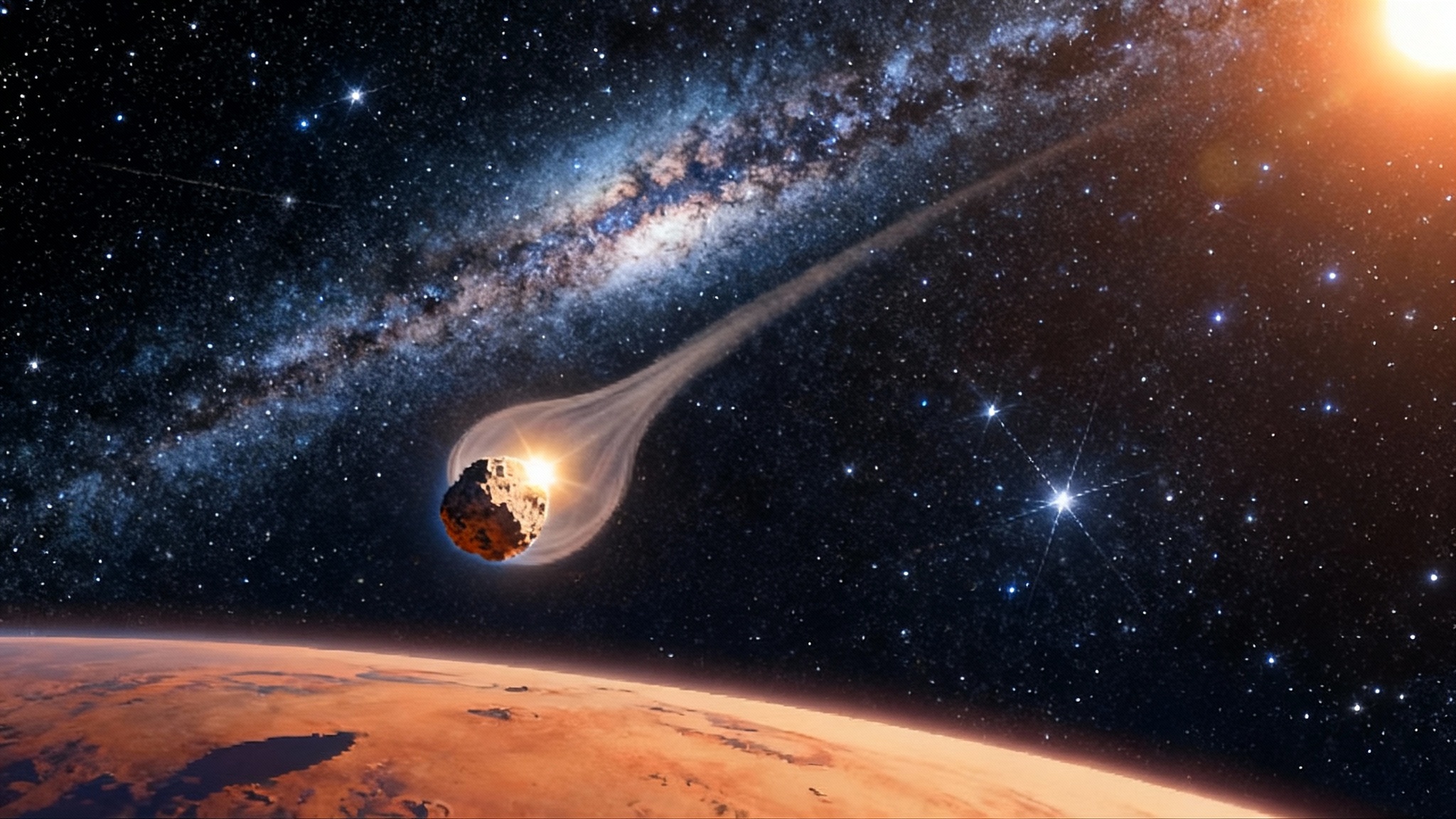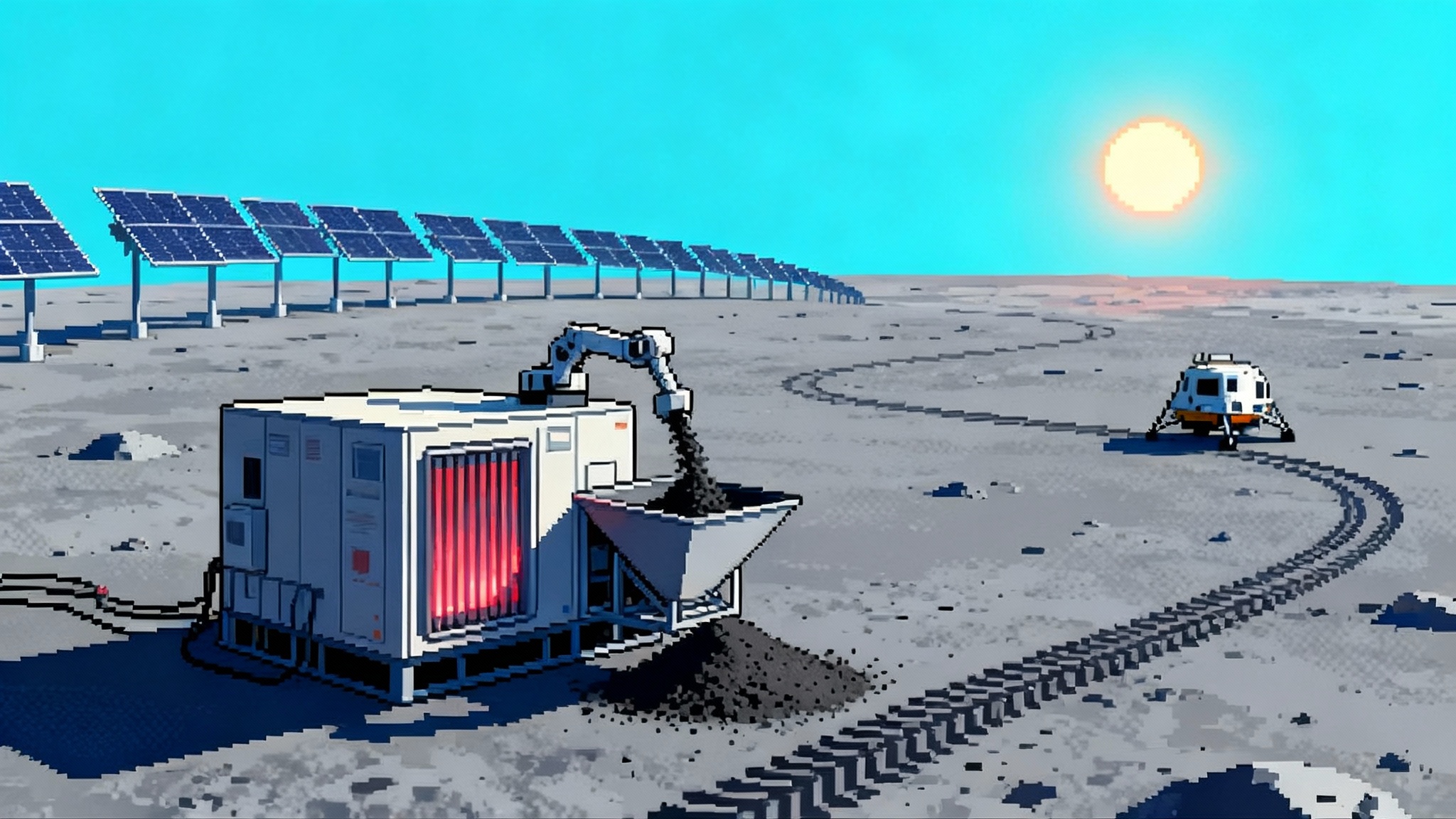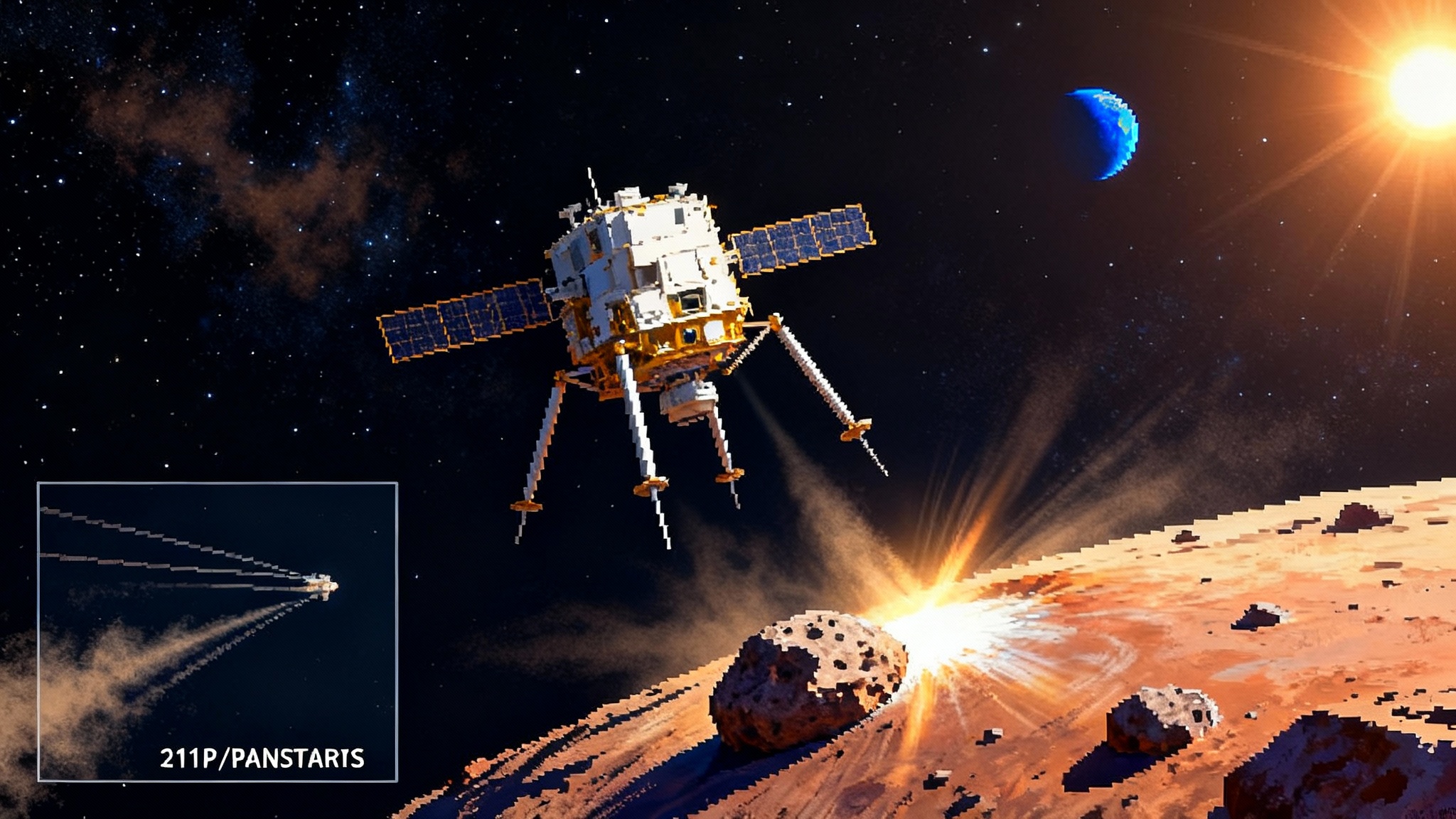Hubble catches a white dwarf devouring a Pluto-like world
Hubble’s ultraviolet spectra caught nitrogen and water rich debris raining onto a nearby white dwarf. It is the clearest sign yet of an exo Kuiper Belt and how icy bodies seed rocky worlds.

A dying star caught in the act
Astronomers have long known that white dwarfs do not rest in peace. These stellar embers, the fate of stars like our Sun, often wear the chemical fingerprints of crushed planets and moons. Now Hubble has witnessed something rarer and far more revealing: a white dwarf about 260 light years away ingesting fragments from a Pluto like world rich in nitrogen and water. The ultraviolet signature is unmistakable and it reshapes the odds for water delivery across planetary systems.
NASA reports that Hubble’s Cosmic Origins Spectrograph picked up debris raining onto the star with an extraordinary mix of volatile elements, including carbon, sulfur, abundant oxygen, and the highest nitrogen level ever seen in such a system. The team infers that the fragments are roughly two thirds water ice by mass, the telltale of an icy body formed far from its star in a Kuiper Belt like reservoir. This is planetary archaeology that Hubble can do only in ultraviolet light, and the result points directly to exo Kuiper Belts as common features of planetary systems (NASA Hubble report on the detection).
What Hubble actually saw
White dwarfs are heavy yet small. Pack about half the Sun’s mass into an Earth sized sphere and you get the extreme gravity that makes these stars so useful as forensic laboratories. Anything that falls onto a white dwarf sinks out of sight in days to weeks. If you detect heavy elements in its atmosphere, the star is being actively fed. In this case, Hubble’s ultraviolet spectra show atmospheric contamination by nitrogen, carbon, oxygen, and sulfur, on top of more familiar rocky elements. The blend is not what you find in pulverized asteroids. It is the chemistry of an icy dwarf planet.
The nitrogen is the smoking gun. In our own solar system, Pluto and Triton wear nitrogen ice on their surfaces. Nitrogen is volatile and hard to retain close to a star. Finding it in such abundance means the donor body formed in the deep freeze beyond the system’s snow lines. The oxygen excess pushes the case further. There is more oxygen than can be bound into rocks, so the remainder must be in water. Put that together and the simplest explanation is that Hubble caught a fragment of an exo Pluto plunging inward, getting ripped apart, and its shrapnel now sifting down onto the white dwarf.
Why ultraviolet was the key
The decisive lines for nitrogen and many volatile molecules lie in the ultraviolet. From the ground, Earth’s atmosphere blocks that light. Hubble’s Cosmic Origins Spectrograph is built for this job. It spreads the ultraviolet light into thousands of fine spectral teeth, each tooth tied to a specific electronic transition in an atom or ion. By measuring the exact depths of those teeth, astronomers can turn starlight into a chemical assay.
Ultraviolet also lets astronomers separate interstellar gas from the white dwarf’s own atmosphere, and it captures elements that optical spectrographs struggle to see. That is why this detection took until now. White dwarf pollution has been reported in hundreds of stars, but almost all those cases were dominated by rocky materials. The volatile signatures were invisible in the optical and required Hubble’s ultraviolet reach to reveal.
An exo-Kuiper Belt comes into view
Where do Pluto like shards come from? The most plausible source is a distant belt of icy planetesimals, an exo Kuiper Belt. Dynamic nudges from surviving planets can fling these bodies inward. As they graze the white dwarf’s tidal radius, they are torn into a stream of fragments that grind down into dust and gas. Some settles into a short lived disk. Some falls directly onto the star. In this event, the chemical mix points to layers that look like the crust and mantle of a dwarf planet, with nitrogen rich ice at the top and a water laden interior.
That picture fits a broader story. Many white dwarfs show calcium, magnesium, and iron from rocky debris. A smaller subset show carbon and oxygen from ice rich sources. The new detection pushes that subset to its most volatile rich extreme yet and shows that full sized dwarf planets can survive the chaotic end stages of stellar evolution long enough to be delivered to the remnant star.
The system behind the signal
The target star is cataloged as WD 1647+375, a compact remnant accreting at roughly a few hundred million grams per second according to the team’s modeling. Spectral fits indicate a nitrogen mass fraction of a few percent and an oxygen excess that implies a water to rock ratio of roughly two and a half to one. The accretion has persisted for at least a decade, which sets a minimum mass for the parent fragment of around 10^17 grams. The true parent body may have been much larger, similar to a chunk broken from a dwarf planet sized object. These details come from the team’s analysis of Hubble ultraviolet spectra and help anchor the simple headline to precise numbers and timescales (technical preprint on WD 1647+375).
Why this matters for life
Water delivery is a central puzzle in planetary science. Earth did not condense with its oceans already in place. Water had to arrive, bit by bit, from bodies that formed beyond the snow line where ice is stable. In our system, candidates include hydrated asteroids and comet like objects from the outer belts. The Hubble detection shows that volatile rich bodies exist and can be delivered in bulk in other systems too. If water and nitrogen rich planetesimals are common, then rocky planets around Sun like stars can receive the raw materials for oceans and atmospheres. For a broader look at how outer solar system chemistry feeds habitability, see our context on Dragonfly Titan mission plans.
There is a second implication. Some planets and moons may continue to receive water long after their stars leave the main sequence. As a star swells into a red giant and then recedes into a white dwarf, its gravity and any surviving giant planets can reshuffle distant reservoirs. The new result shows that the pipeline remains open. Volatile rich bodies can make the long trip even after the host star has died.
The fate of our solar system
This discovery offers a preview of our own far future. In about 5 billion years the Sun will expand into a red giant, swallow Mercury and Venus, and likely strip Earth of its atmosphere and oceans. The outer planets will migrate and stir the Kuiper Belt. Many Kuiper Belt objects will be destabilized and some will dive inward. After the Sun becomes a white dwarf, its gravity will continue to capture those icy bodies. To an alien astronomer with a Hubble like telescope, our white dwarf would look much like WD 1647+375 looks to us today, with ultraviolet fingerprints that announce nitrogen and water from exo Pluto fragments.
That does not mean Earth will be habitable in that era. The white dwarf habitable zone sits just a few solar radii from the star. A rocky planet would need to migrate inward after the red giant phase and avoid getting torn apart. Tidal heating and stellar flares create hazards. Yet the volatile supply line will exist. If a planet or large moon can settle into a stable orbit, it could gather an atmosphere and surface water from the same kinds of icy deliveries Hubble just revealed.
How planetary systems feed their white dwarfs
The delivery mechanism is a cascade:
- A surviving giant planet or multiple planets perturb the outer belt, nudging objects onto elongated orbits.
- Repeated close passes near the white dwarf shred an object into a stream of fragments.
- The stream collides with itself, turning boulders into pebbles and dust, while gas released from ices damps orbits and speeds up the inward drift.
- The white dwarf’s atmosphere captures a fraction of the flow, and the rest may settle into a transient disk.
Chemistry tracks the steps. Water ice sublimates early and its oxygen and hydrogen appear in the spectra. Nitrogen survives a bit longer but still shows up as the fragments get close. Refractory elements arrive last. Because heavy atoms sink quickly in the white dwarf’s gravity, the composition you see is the composition being delivered right now. That is why this result is so clean. There is little ambiguity about timing.
Ultraviolet spectroscopy as a planetary coroner’s report
Think of the white dwarf spectrum as a coroner’s report for a shattered world. Each absorption line corresponds to a tag on a different piece of anatomy. Nitrogen flags a cold surface layer. Oxygen in excess of rock forming needs flags water. Carbon and sulfur point to ices and organics. Calcium, magnesium, and iron tag the rocky skeleton. The ratios tell you whether the original body looked like a comet, an asteroid, or a dwarf planet. For related context on volatile rich visitors, see why this interstellar comet matters.
In this case the lines point to a dwarf planet. The nitrogen fraction is too high for typical asteroids. The water to rock ratio is too high for most comets when scaled to the mass inferred. The simplest match is a Pluto class object with a nitrogen rich crust and a water rich interior.
What happens to habitable worlds during and after stellar death
Planets within the inner few astronomical units face a harsh end when a star becomes a red giant. Some are engulfed. Others lose atmospheres. Surfaces bake. But habitability is a moving target. After the red giant phase, the white dwarf cools and dims. A planet that migrates inward to a stable orbit could receive a late veneer of ices and volatiles from the perturbed outer belt. The time window is long. White dwarfs cool over billions of years. Energy sources would include residual heat, tidal forces if the orbit is slightly eccentric, and even faint starlight if the orbit sits in the narrow temperate zone.
There are challenges. Tidal forces near a white dwarf are severe. Planets need to avoid the Roche limit. Atmospheres close to a hot young white dwarf can erode. But the essential ingredients for surface water and nitrogen rich air can arrive. The Hubble discovery proves that the supply chain is real.
What astronomers will do next
Follow up will sharpen the picture:
- Infrared spectroscopy with JWST. Search for water vapor, carbonates, and carbon monoxide in any debris disk, and measure dust temperatures and grain sizes.
- Ultraviolet monitoring with Hubble. Track how nitrogen and rocky lines evolve to map how the fragments are being sorted and consumed.
- Ground based optical work. Pin down metal lines and refine sinking times; combine with Gaia astrometry to expand the nearby white dwarf target list. For small body delivery analogs closer to home, see our Tianwen-2 sample mission update.
Surveys can then answer the key statistics. How often do white dwarfs show volatile heavy diets rather than rocky snacks. How often is nitrogen abundant. How often does the oxygen excess indicate water. The answers will calibrate models of outer belt architecture and planet survival.
A roadmap to more exo-Kuiper Belts
Finding more systems like this requires three ingredients. First, a catalog of nearby white dwarfs bright enough for ultraviolet spectroscopy. Second, time on ultraviolet capable telescopes to scan for volatile lines. Third, follow up in the infrared to detect any dusty disks and to identify molecules. Hubble remains unique in ultraviolet, but future missions will be crucial. A large ultraviolet optical infrared observatory would expand this field from dozens to thousands of targets. The payoff would be a census of water and nitrogen delivery in planetary systems, not just a few highlight cases.
Even with today’s tools, the search can accelerate. White dwarfs with infrared excesses from dust disks are prime candidates, as are systems with metal polluted atmospheres. Combining ultraviolet line searches with infrared disk detections and dynamical simulations will reveal which architectures are most likely to fling exo Plutos inward. The more we find, the clearer the picture of how water moves through planetary systems.
Why this discovery resonates
It is one thing to find an exoplanet. It is another to read the chemistry of a world we cannot see, from layers that once lay under an alien sky. Hubble’s detection turns a distant white dwarf into a laboratory for studying the crust and mantle of an icy dwarf planet. The nitrogen makes the case. The water seals it. The implication is profound. There are cold reservoirs of water rich bodies in other solar systems, and they can deliver oceans and air to rocky worlds over vast stretches of time.
This is also a mirror held to our future. The Kuiper Belt that rings our planetary system is not a quiet graveyard. It is a reservoir that can be tapped by cosmic reshuffling when the Sun dies. The arc from formation to demise to delivery is part of the natural lifecycle of planetary systems. Hubble just gave us a vivid snapshot of that cycle in action.
The bottom line
A white dwarf 260 light years away is gulping down nitrogen and water rich debris that once belonged to a Pluto like world. Ultraviolet spectroscopy revealed the volatiles, including the strongest nitrogen signal yet seen in such a system, and an oxygen excess that signals abundant water. The find is direct evidence for an exo Kuiper Belt and for a working pipeline that can move life friendly ingredients from the cold outer reaches to the inner zones where rocky planets reside. It foreshadows our own Sun’s far future and points the way to a new campaign of ultraviolet and infrared observations that will map icy delivery across the Galaxy.
